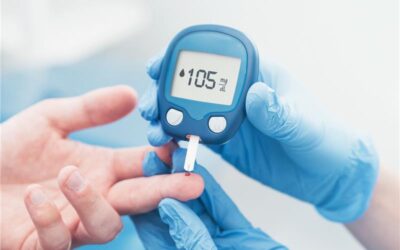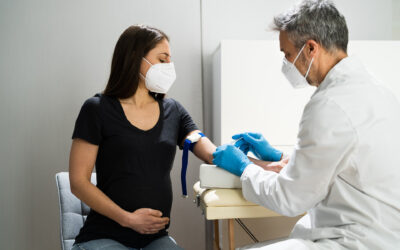Case Study
Periodontal Disease and Diabetes Biomarkers
The study provides a catalog of salivary metabolites that reflect diabetic changes and provide insight into the underlying link between periodontitis and diabetes.
Diabetes increases the risk for periodontitis, and the severity of periodontitis has been shown to have a negative effect on glycemic control. The study aimed to identify candidate biomarkers associated with periodontitis and/or diabetes that may demonstrate an interaction between these diseases.
Diabetes increases the risk for periodontitis, and the severity of periodontitis has been shown to have a negative effect on glycemic control. The study aimed to identify candidate biomarkers associated with periodontitis and/or diabetes that may demonstrate an interaction between these diseases.

The Challenge: Dissecting the Underlying Link Between Periodontitis and Diabetes
Periodontal disease (periodontitis) is a chronic inflammatory condition that causes persistent gingival inflammation, tooth loss, connective tissue destruction, and bone resorption.1 Furthermore, periodontal disease has been bi-directionally associated with several systemic diseases, including diabetes. Diabetes increases the risk for periodontitis, and the severity of this oral disease has been shown to have a negative effect on glycemic control.2 However, the mechanisms that underpin the link between these two conditions are not entirely understood.
There is a lack of studies that address the complexity of oral-systemic crosstalk, such as how periodontal inflammation relates to diabetes. Further characterization of metabolomic profiles associated with periodontal disease and diabetic traits may provide a better understanding of the underlying mechanism of oral-systemic crosstalk.
Metabolon Insight: Candidate Biomarkers for Periodontitis and Diabetes
Comprehensive metabolite profiling was performed using the Global Discovery Panel to analyze saliva and plasma samples from 161 subjects with and without diabetes who had healthy gingiva, gingivitis, and periodontitis. The study objective was to identify candidate biomarkers associated with periodontitis and/or diabetes that may demonstrate an interaction between these diseases.
The Solution: Metabolomics Identifies Biomarkers that Reveal an Interaction
Identifying a molecular signature for periodontitis using unbiased metabolic profiling allows the elucidation of biomarkers to aid in the diagnosis and monitoring of both diabetes and periodontal disease. A total of 772 metabolites were found in the plasma samples, while 475 were detected in saliva. Analysis of this data demonstrated that diabetics have significantly higher levels of glucose and α-hydroxybutyrate, both well-established markers of diabetes, in saliva and plasma samples. These findings highlight the potential utility of saliva for assessing the risk of diabetes without needing a blood test.
Comparing healthy and periodontitis saliva samples showed similar results to previous studies. These changes included increased levels of w-6 fatty acids in the periodontitis saliva samples, indicative of a hyperinflammatory environment resulting from chronic bacterial infection. Saliva samples from diabetics with gingivitis had increased levels of markers of purine degradation, oxidative stress (eg, xanthine), and lipid inflammatory mediators (eg, 12-HETE and palmitoyl sphingomyelin) when compared to the saliva samples from diabetic subjects with healthy gums (gingiva) (Table 1). Overall, the present study identified salivary biochemical changes associated with diabetes as well as changes associated with periodontal disease. Untargeted metabolomics profiling of human saliva in diabetics replicated some of the metabolic signatures of periodontal disease progression in nondiabetic patients and revealed unique metabolic signatures associated with periodontal disease in diabetics.
| Biochemical Name | Fold Change (Diabetic – Gingivitis/Diabetic – Healthy) | P value | Q value |
|---|---|---|---|
| 12-HETE | 2.41 | 0.0127 | 0.629 |
| Linoleate (18:2n6) | 3.22 | 0.0269 | 0.629 |
| Linolenate [α or γ (18:3n3 or 6)] | 4.52 | 0.0476 | 0.629 |
| Docosapentaenoate (n3 DPA; 22:5n3) | 1.63 | 0.0483 | 0.629 |
| Arachidonate (20:4n6) | 2.00 | 0.0631 | 0.6517 |
| Palmitoyl sphingomyelin | 1.65 | 0.0422 | 0.629 |
Table 1. Fatty acids and sphingomyelins increased in saliva from subjects with diabetes and periodontal disease.
Copyright: The copyright holder of Table 1 is the author/funder of Barnes, et al., 2014. It is made available under a CC-BY 4.0 International license.
The Outcome: Salivary Metabolites Can Monitor Periodontal Disease and Diabetes
An accurate diagnosis of periodontal disease activity may facilitate effective prevention and treatment. This study demonstrated that metabolomics is a powerful tool for dental research. The biomarkers identified in the current study that segregated the subjects by periodontal status can be leveraged and developed into an efficient diagnostic to monitor periodontal disease activity. The present report also shows multivariate patterns of association between periodontal disease and diabetes. The study provides a catalog of salivary metabolites that potentially reflect diabetic changes and provide insight into the underlying link between periodontitis and diabetes.
Furthermore, saliva has been extensively examined to assess oral disease status. The results from this study provide a new starting point for further investigations of oral-systemic crosstalk. Analysis of salivary metabolites could become an attractive non-invasive alternative to blood testing for screening metabolic diseases. In the future, saliva testing during regular dental visits may allow early detection of metabolic disorders.
References
1. Barnes VM, Kennedy AD, Panagakos F, et al. Global metabolomic analysis of human saliva and plasma from healthy and diabetic subjects, with and without periodontal disease. PLoS One. 2014;9(8):e105181. doi:10.1371/journal.pone.0105181
2. Preshaw PM, Alba AL, Herrera D, et al. Periodontitis and diabetes: a two-way relationship. Diabetologia. Jan 2012;55(1):21-31. doi:10.1007/s00125-011-2342-y






